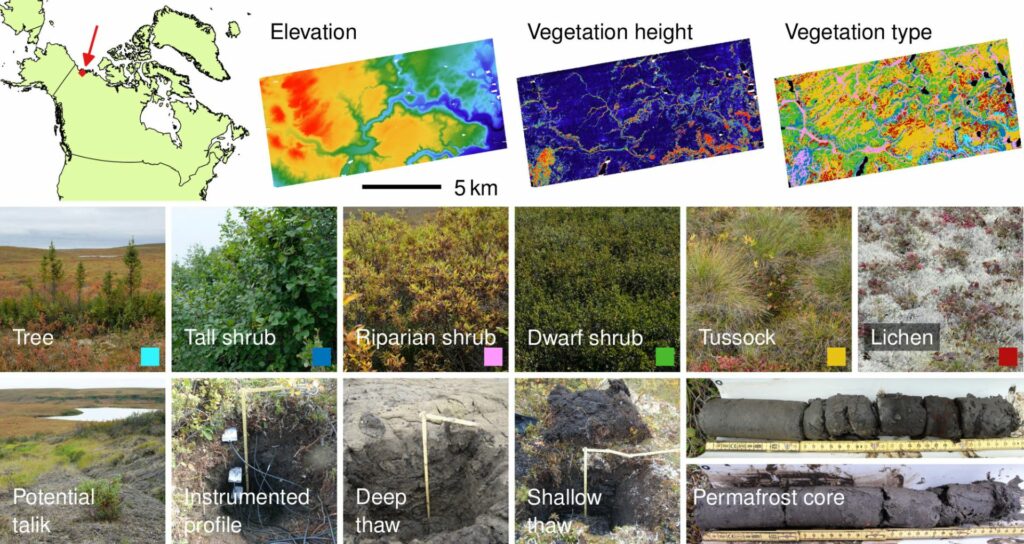HIT Permafrost
The Hidden Image of Thawing Permafrost
The project aims to develop a method for determining just how extensively thaw processes have already progressed in permafrost regions. The machine learning approach to be developed will be used to analyse radar images from aircraft in order to learn more about the properties of the subsurface permafrost.

Thawing permafrost at Trail Valley Creek in Canada may bring uncertainty for the entire region: roads and buildings could lose their solid foundations if the ground subsides. Also, the thawing of permafrost everywhere in the world – be it in Canada, Siberia, or other parts of the Arctic – serves as an indicator of global warming.
“Permafrost is a phenomenon that occurs under the surface of the soil, and is therefore difficult to measure,” says Julia Boike of the Alfred Wegener Institute (AWI). Even under coverings of permanent ice, experts believe, there are vast areas in which the ground has irreversibly thawed. These areas of unfrozen ground in permafrost regions are known as talik. Exactly where these are located and how extensive they are, however, is as yet unknown.
This project proposes a method for quantifying the properties of subsurface permafrost. This will reveal how rapidly ground thaw is progressing. The area of investigation is at Trail Valley Creek, located at the forest-tundra boundary in the North West Canadian permafrost zone. The researchers are developing an approach that will combine a physical permafrost model with data newly obtained from aerial images as well as with interferometry, tomography, and polarimetry information obtained from radar data. “We have many datasets from past measurement campaigns, which we want to combine and interpret together in order to learn more about the conditions of the ground,” says Irena Hajnsek of the German Aerospace Center (DLR).
Other projects
TerraByte-DNN2Sim
On the trail of the mystery of the laws of calving
Researchers still face a mystery when it comes to the laws by which glaciers calve. This project aims to use satellite imagery, artificial intelligence, mathematical optimisation and a new data processing pipeline to track the movements of glacier fronts in Antarctica to get closer to solving the mystery.Hyper 3D-AI
Artificial Intelligence for 3D multimodal point cloud classification
The aim is to develop an artificial intelligence that can achieve the fusion of two-dimensional data with three-dimensional information. Based on this, the software would simultaneously be able to recognise image characteristics as well as the spatial relationships between different objects.MultiSaT4SLOWS
Multi-Satellite imaging for Space-based Landslide Occurrence and Warning Service
In order to detect impending landslides before they occur and to enable reliable emergency mapping after a landslide, the researchers are combining optical data with radar data from satellites. Using machine learning methods, computers will be trained to recognise the tiniest of changes in things like sloping landscape surfaces.

